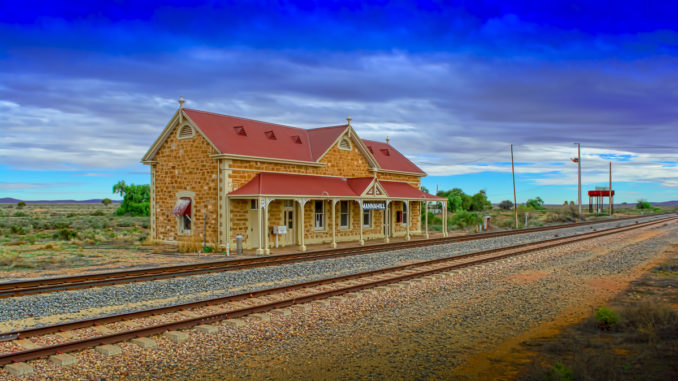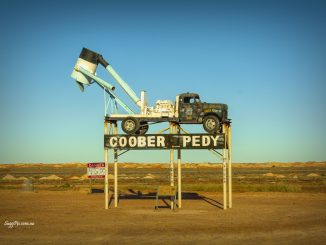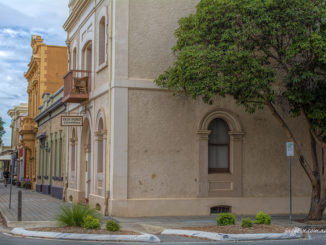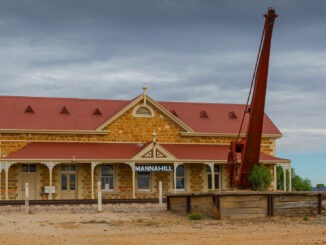
The Barrier Highway starts at Nyngan where it joins the Mitchell Highway. It heads west past Hermidale and Boppy Mountain to Cobar, a mining town. It then continues to Wilcannia where it crosses the Darling River. Further west it passes through Broken Hill and enters South Australia, turning southwest towards Adelaide.
The area traversed by the Barrier Highway is remote and very sparsely settled. The name of the highway is derived from the Barrier Ranges in Far Western NSW.
When you cross into South Australia there a number of Railway Settlements. Most now have populations of less than 20 people.
Olary is a settlement on the Barrier Highway in South Australia. It is situated near Olary Creek and is one of the easternmost settlements in South Australia. It was established in the late 1880s to service the highway and the railway which pass through it.
The Post Office opened on 12 October 1886, it was renamed Oolarie around 1888 and Olary around 1896.After the modernisation of transport which travelled between Adelaide and Broken Hill the village population declined.
Mannahill is a settlement on the Barrier Highway and Indian Pacific railway line.The population of Mannahill is 26 persons.
The village also supported early gold mining activity at Mannahill and at Wadnaminga to the south. Mannahill was surveyed in the mid-1880s as a water-supply and maintenance point on the Peterborough to Cockburn railway line which was completed in 1887. The railway station had been previously constructed in 1886.
The village still has the Mannahill Hotel which was built in 1889. Mannahill Police Station is situated in Railway Terrace, Mannahill.
The settlement of Cockburn sits on the border of South Australia and New South Wales near Broken Hill. Cockburn came into existence in 1886 (on the SA Side of the border) as a place where the Silverton Tramway’s trains would exchange locomotives and crews on their way from Silverton to Broken Hill. The route was extremely important as it provided balanced trading for locomotives with a momentum grade ‘up’ from Broken Hill to Cockburn and a rising grade ‘down’ from Cockburn to Broken Hill. This was the main advantage of the route to and from Cockburn.
On the NSW side of the border the Silverton Tramway Company built a station and siding called Burns. Cockburn had a population of 2,000 and boasted two hotels, two general stores, three boarding houses, schools and churches. It contained within its business sector a blacksmith, butcher, baker, produce merchant and carrier. As mining wound down around Silverton, Cockburn lost its importance and also entered into a fast decline. The standard gauge railway line, officially opened in 1970, runs south of the surveyed town limits of Cockburn, and has a new station and a passing loop. The “new” station is now disused. Today, Cockburn, with a population of around 25.





Be the first to comment